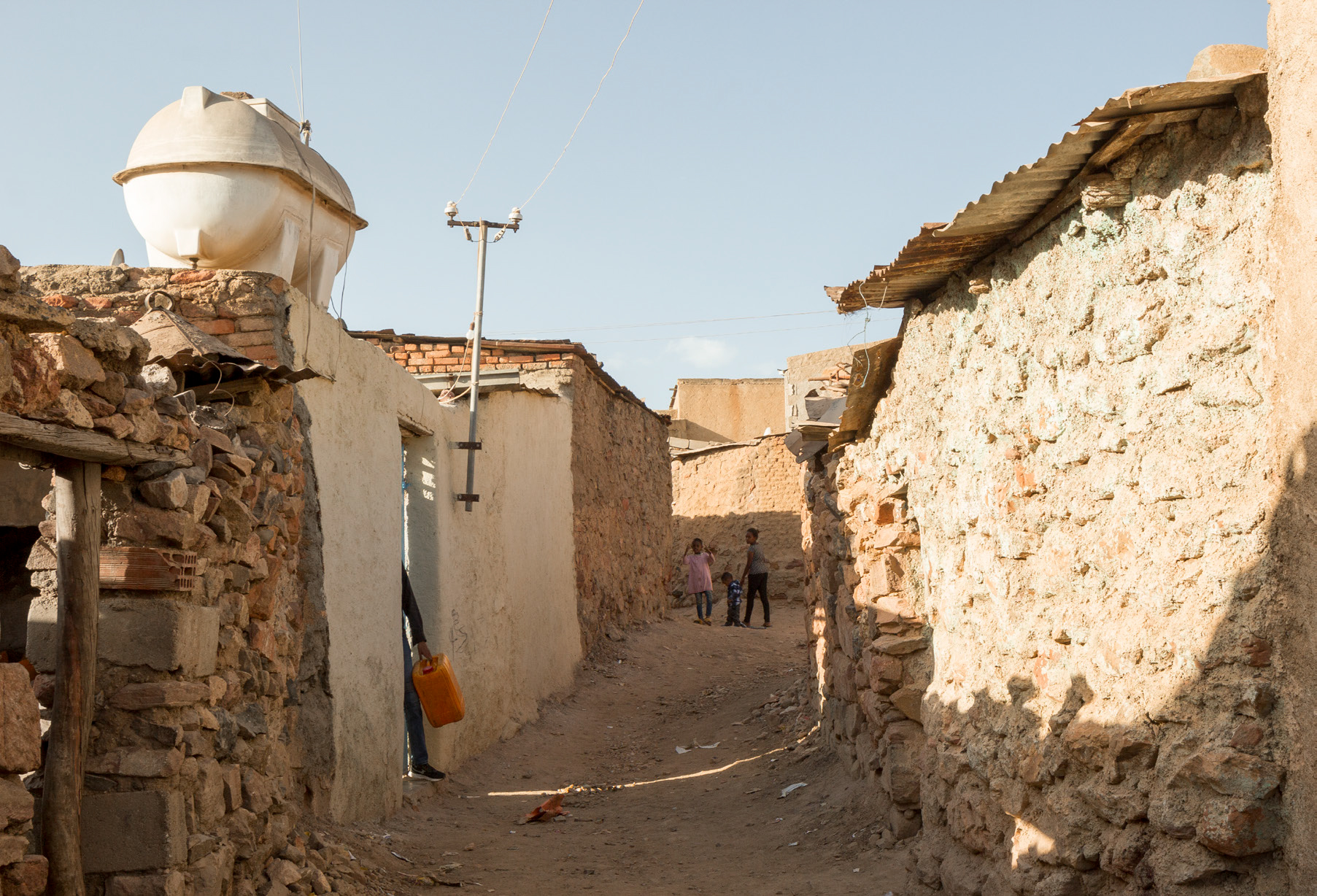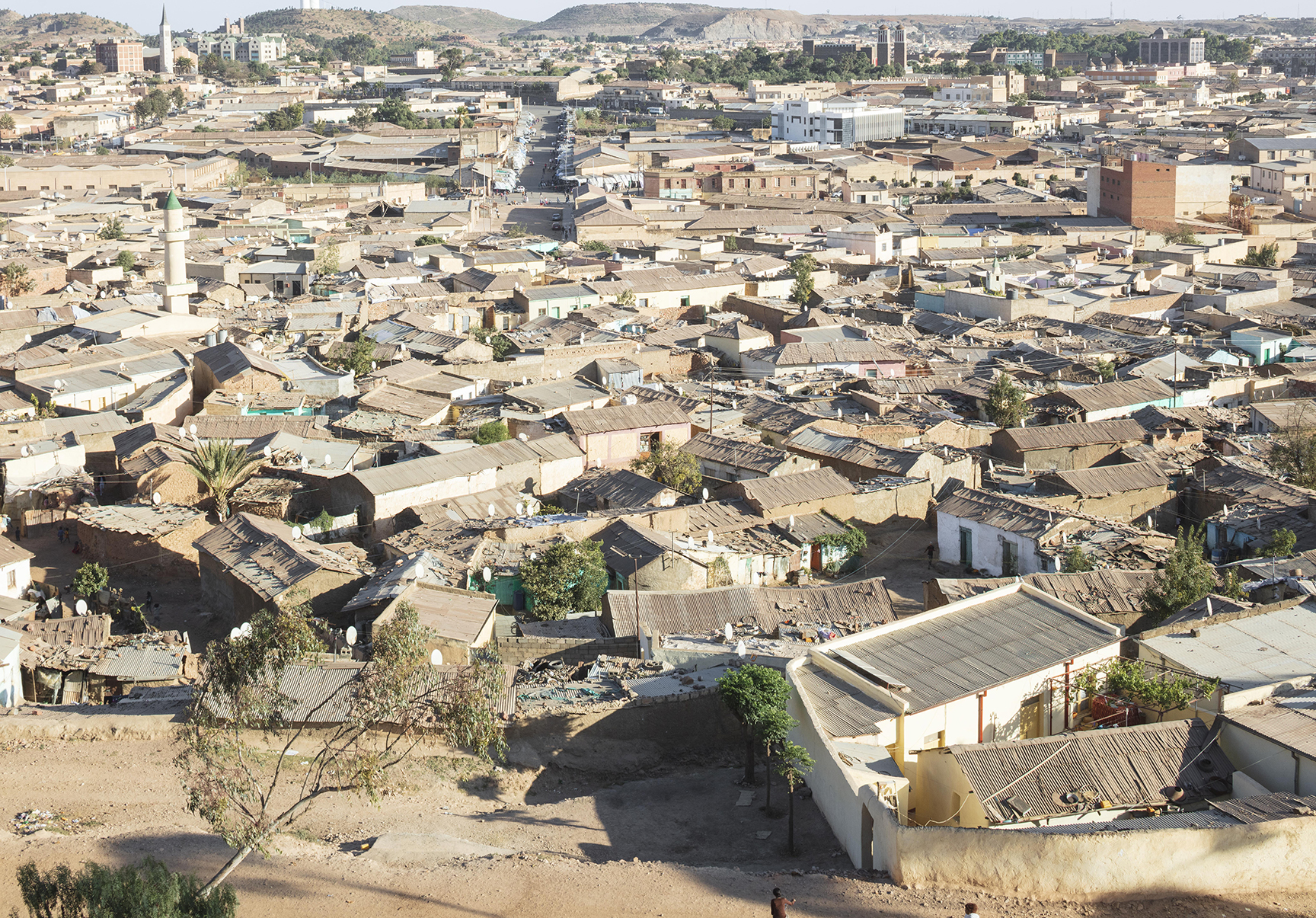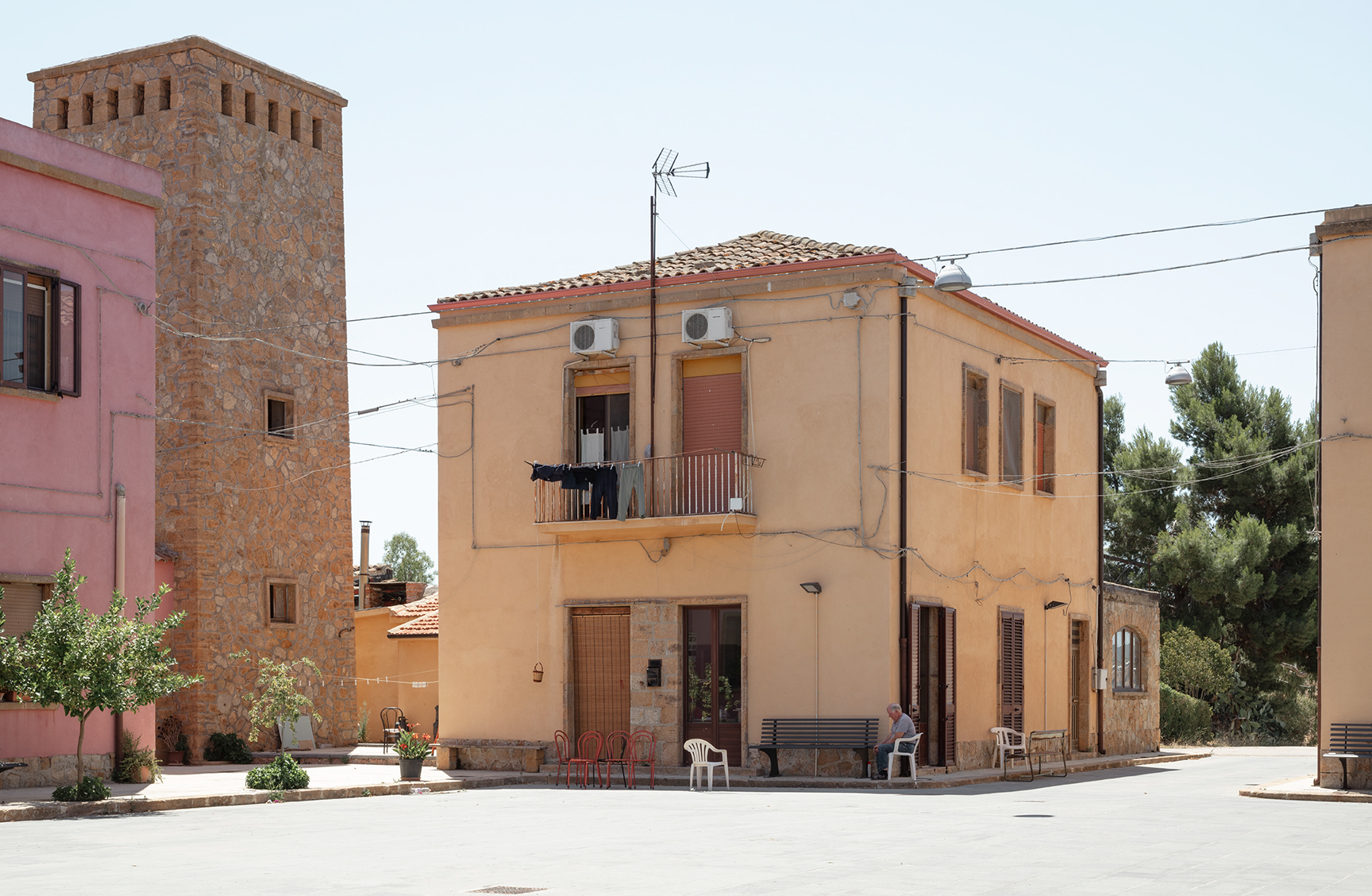Asmara and Aba Shawl
15.3229° N, 38.9251° E
Sicily
37.2303° N, 15.0227° E
Part I Introduction
In the short docufilm The Form of the City (1974) Pier Paolo Pasolini is seen walking the sandy coastline of the Agro Pontino (Pontine Marshes) near Rome. He offers a critical reflection on the state of postwar society in the age of consumerism, mass media, and television. Against what he sees as the specter of looming decadence, Pasolini praises the lifeworld of Sabaudia, a rural town that only a few decades earlier had been sanctified by Mussolini as the symbol of bonifica integrale (integral reclamation) and the so-called “internal colonization” of Italy’s southern lands.
As if a guide escorting a tourist, Pasolini confesses his genuine fascination with the rationalist and metaphysic forms of Sabaudia. It is, he tells us, a place in which, “you can feel that this city was built to live in; you can find ordinary families inside it, human beings, living creatures who are complete, entire and fulfilled in their humble circumstances.”1 Sabaudia had to be admired, Pasolini claims, because it was built “on a human scale” where—despite the form and history of its architecture—“there was nothing fascist in it.” In other words, these colonial settlements have no roots in the regime that produced them, at least in the mind of Pasolini. They are instead “the expression of those same realities that fascism had tyrannically dominated, namely Italy’s provincial, rustic, and preindustrial worlds.”2
Pasolini was not alone in his fascination with the “beauty” of these cities; many other cinematographers, artists, and intellectuals have influenced the ways in which western societies have sought to rationalize the forms of modernist buildings designed and built under fascism, to the point of celebrating them as innocent urban stages for perpetuating self-indulgent, rose-colored narratives about violent pasts. These are cities whose forms are “disconnected” from the social and political context that produced them—a series of cinematic urban realities that could inspire a new meme of “fascist architecture without fascism,” whereby the architecture that once served as the vehicle for fascism’s segregationist and imperialist ethos is disembodied from its purpose. Such an attitude was instrumental during Italy’s modernization and the racialized nature of the imperial project as it has played out in contexts not only including Libya and the Horn of Africa, but also the Italian peninsula, where the south of Italy was considered an internal frontier to be tamed and colonized.
Few places illustrate this condition better than the two areas that represent the beginning and end of Italy’s imperial modernist project. The first example, Aba Shawl, the first Indigenous Eritrean urban settlement, was swallowed up when the Italians started to colonize the newly occupied territory and founded the city of Asmara (today’s capital of Eritrea). As a result, Asmara became a site for European design projects, including many examples of fascist architecture (in the 1930s the city was known as Piccola Roma, or Little Rome). Aba Shawl, which before the Italian invasion was part of a cluster of four villages also known in Tigrinya as Arbate Asmare, was referred to by its colonizers as the city’s “native quarter,” where the Indigenous population was confined. The second example is located within Italy itself and takes the form of a series of rural settlements built by Mussolini’s government to “modernize” Sicily’s “backward” countryside. This so-called “internal colonization” was part of a capital-driven campaign for reclaiming arable land that mainly affected Italy’s rural South. Through a synthesis of monumentalism, technological development, and industrial planning, the fascist regime planned designs for urban and non-urban reclamation in order to celebrate a fascist style of living. This program was launched in continuation of Italy’s settler colonial ventures in Africa.
These sites—in Eritrea and Sicily’s rural settlements—represent Italy’s first colony (1889) and the last outpost of its fascist regime (1941). While symbolizing opposite architectural and spatial worlds, with Aba Shawl considered a “native quarter” and Sicily a “rural colony,” both spaces reflect forms of modern violence. This essay is therefore a patchwork of tales, insights, and visions for spatial and epistemic twists that suggest a different vision for historical narratives, architectural preservation, and heritage creation.


Part II In the “buffer zone” of Aba Shawl, Asmara
We visited Aba Shawl in January 2019, having spent several days touring the city of Asmara.3 Two years earlier, in 2017, UNESCO nominated Asmara a World Heritage Site, citing the city as “an exceptional example of early modernist urbanism from the beginning of the twentieth century and its adaptation to an African context.” The area that UNESCO demarcated in its World Heritage list follows the perimeter of the original colonial master plan4—that is, the modernist-designed, segregated “whites-only” area of the colonized city. The Indigenous settlement of Aba Shawl is instead relegated to an outer “buffer zone.”5 Sticking to controversial principles in preservation of “authenticity” and “originality,” the nominated preservation area includes the ancient villages pre-dating the colonial city while excluding the expansion and informal sprawl of Aba Shawl that followed the Italian occupation.
In the language of architectural and cultural conservation, a buffer zone refers to a belt of protection, a landscape that surrounds the nominated space and facilitates (bureaucratically, technically, and strategically) its preservation. The term is also suggestive of warfare and the separate areas between combatants. It is a concept solidly anchored in the tradition of western architectural knowledge, dating back to the Roman architect Vitruvius, who related the “demarcation of an abaton as an inaccessible space by the people of Rhodes around the statue of Artemesia”6—in a word, delineating the sacred from the profane. According to the 2008 International Centre for the Study of the Preservation and Restoration of Cultural Property (ICCROM) protocol, a buffer zone is a tool that disconnects the object of protection from external dangers. Aba Shawl’s role and function is thus to serve as a no man’s land to preserve the colonial city. The urban settlement of Aba Shawl is what remains of the quarter of the Piano Cafiero,7 the cadastral master plan drawn and implemented by the Italian government in 1936,8 which aimed to extend the demolition of Asmara’s already segregated Indigenous quarters to give more “breathing space” to the city center where all the government buildings and National Fascist Party headquarters were located. The native population was thus relocated beyond the northern hills.
If the colonial city was built using a scale design and comprised open space, cinemas, factories, shops, bars, hotels, residences, and government headquarters all standing proudly as symbols of white dominance and fascist power, Aba Shawl featured none of these elements. The only thinking that went into the transformation of the area was that it had to be separated from the center of Asmara. In the eyes of the colonizers, Aba Shawl was viewed as everything Asmara was not: a “backwards” and “underdeveloped” “native quarter” full of danger.
Today Aba Shawl is a densely populated neighborhood, a maze of low, clustered homes, unpaved alleys, and narrow sandy and pebbled passageways that stand in contrast with the geometric and ventilated layout of the modernist city. Although Aba Shawl is considered by many Eritreans to be the pulse of Asmara’s identity, it still bears the stigma of an underserviced and unsafe ghetto. Many residents of Asmara do not want to live in or spend time there, and Eritreans are well aware that the ongoing divisions and social stigmas through which Aba Shawl is framed are issues that their communities still have to tackle: it is the need to fight “the colony within,” whereby segregations and demonizations of the past still influence those of the present.


Part III – Rural Colonies of Sicily
In June 2021, with Aba Shawl still vivid in our minds, we visited the internal rural lands of Sicily, first stop Borgo Gallea, a rural settlement in the province of Agrigento. There is no one else around: as we walk towards the only open cafe, the square and the buildings appear empty and the facades show traces of fresh plaster and recent renovation. When we order espressos at the counter, the young barman cannot help but ask: “You know who built all this, don’t you?”
In 1940, the Italian fascist regime founded its last agency in Sicily, the Ente di Colonizzazione del Latifondo Siciliano (ECLS).9 Between 1940 and 1943, ECLS built more than 2,000 homesteads and completed eight new towns in Sicily. They were built as replicas of the same structures and planimetries that had already appeared on African soil. All had the buildings of the Ente, piazzas, schools, fascist party headquarters, churches, pharmacies, artisan workshops, and restaurants.10 To celebrate the fictitious unity between the colonies in Africa and the south of Italy, many of the Sicilian villages took the names of fascist martyrs, soldiers, and settlers who died in Ethiopia during the colonial war of occupation.
While on the one hand, the construction of settlements in the Sicilian countryside were supposed to tackle the needs of agrarian change, the fascist reform of the latifondo did not lead to the redistribution of land to peasants and farmers. On top of that, the internal colonization of the South, as well as Italy’s settler colonial projects in Africa, were short-lived: the end of the Second World War also brought the formal end of fascism. Italy “lost”11 its colonies while the many Ente scattered across the south of the peninsula were progressively shut down or reformed.12 The word “colonization” was then “secularized” and replaced by “development.” The new Ente was re-invented to again tackle the unsolved problem of land restitution, and despite the echoes of fascist rhetoric, it was celebrated by Italy’s newly formed democratic institutions. However, southern latifondista were not defeated and managed to get parts of the expropriated land “re-assigned.” Thanks to local mobsters who took back control of large portions of the area, most infrastructural projects, such as irrigation, drainage, aqueducts, roads, and railroads were kept under the same coercive control of wealthy landowners. In this scenario, most of Sicily’s rural settlements were abandoned to a slow decay, and the surrounding areas were depopulated by new waves of outward migration.
After decades of neglect, the rural towns designed by the regime attracted the attention of local, regional, and central governments. Since 2007, a project entitled La via dei Borghi has sought public funding to restore these fascist settlements. The program has been promoted particularly by right-wing (but not only) regional governments as a nostalgic celebration of fascist ideals and the “uncontested beauty” of modernist architecture—all done to boost Sicily’s rural tourism. Over the past decade some municipalities have secured funding for an architectural restoration of “clean” and “authentic” buildings, following a traditional preservationist approach that looks at modern architecture as an isolated object, an aestheticized icon to be admired for its formalist features.
The renovation of Borgo Bonsignore has become the flagship of that project. The town was originally built in 1940 and named after a carabinieri officer who died in the Battle of Gunu Gadu in 1936 during the imperial war that Italy fought against Ethiopia. As we walk around the empty square, the whole settlement is literally wrapped in scaffolding. Despite the many tarpaulins covering its facades and arches, it is impossible to ignore the recently installed plaque commemorating the settler-martyr, as well as the heavy coat of stucco on the facade of the former casa del fascio. Here, restoration work is anchored to reviving the cinematic and metaphysical city, to the point that only a few years ago even global corporations such as Google rented the Borgo and transformed it into a stage for celebrities and business leaders.
But like in any theatrical performance, there is always an element of smoke and mirrors, and the stage of the Borgo is indeed designed for multiple illusions and deception. The undergoing restoration of the settlement’s facades is again perpetuating an image of preservation where “alterations” are banned and forbidden. But what happens behind the curtain? Behind the attempts to protect the outward appearances of fascist architecture?
Over the years, with the failures of the agrarian reform and the closure of the new Ente of Development, the school and other buildings in the Borgo have gradually been reappropriated by local families. And behind the facades, informal changes to the interior design have organically followed: while outside, the original plaster of the buildings has slowly crumbled, on the inside, kitchens have been moved, walls knocked down, and new bedrooms added. Against a destiny of decay, these so-called illegal residents have maintained the buildings and the settlement, preserving without preservationists.
Conflicts among squatters and local municipalities always arise as questions of preservation resurface. Similarly, in the settlement of Borgo Cascino, near Enna in the center of Sicily, we hear of fraught relations between the few remaining residents and public officials around issues of care and maintenance. An old couple who has squatted in the Borgo for more than fifty years faced eviction when the local government planned restoration works. By keeping the settlement livable they eventually negotiated their indefinite right to stay. The result is another blow to an already weakened rhetoric around a type of conservation that cares for facades but ignores the lives that exist behind them and refuses to recognize the marginal communities performing unruly preservation—unofficially and with no public status, with no predetermined expertise or set of specific skills.
What is most striking about the fascist rural settlements of the Sicilian countryside is that despite their differences (some are abandoned and in ruins, some are homes to squatters or only half-populated) there is a common denominator: in those places the modern distinction between public and private spheres repeatedly blurs—or better, it collapses. While this could be explained as an outcome of the widespread lack of trust among the local population in its public institutions and governing bodies, the erosion between private and public life in the Borghi can—like at Aba Shawl—offer the opportunity to reverse conventional ideas about preservation, heritage-making, and design.
This text has been excerpted from forA issue #1: Frictions. To read the full essay, purchase the journal here: https://birkhauser.com/books/9783035628517
Luca Capuano is a photographer and educator. UNESCO, the Italian Ministry of Cultural Assets and Activities, and the Bangkok Embassy are just a handful of the well-known institutions he has worked with. His projects range from photo essays documenting Italian cultural heritage to shoots and ad campaigns for designer brands. His photos have been exhibited at the Seoul Biennale of Architecture and Urbanism, Abu Dhabi Nyuad Art Gallery, and Berlin Institut für Architektur, among others. He teaches photography at the Isia Institute of Urbino.
Emilio Distretti is a researcher, writer, and educator. He is Research Tutor at the RCA School of Architecture, London, and a postdoctoral fellow in History and Theory of Architecture and Urbanism at the University of Basel. He engages with critical research methodologies and pedagogy centered around the entanglements between repair, reparations, and decolonization in the Mediterranean basin and in the Horn of Africa. In his writings and collaborations, he deploys and narrates the public dimension of architecture as a space and a tool for imaginative futures and repair from colonialism and its racialised, social, and economic aftermaths, a space for critical knowledge production around preservation. His work features in journals, books, and magazines including Cabinet, e-flux, the Journal of Architecture, Future Anterior, and Antipode: A Journal of Radical Geography. He collaborates with the art collective DAAR and with RIWAQ Centre for Architectural Conservation.
Alessandro Petti is Professor of Architecture and Social Justice at the Royal Institute of Art in Stockholm and co-director of DAAR (Decolonizing Architecture Art Residency), an architectural studio and residency program centered around the relation of politics and architecture. His recent books include Refugee Heritage (Art and Theory, Stockholm 2021) and Permanent Temporariness (Art and Theory, Stockholm 2019).